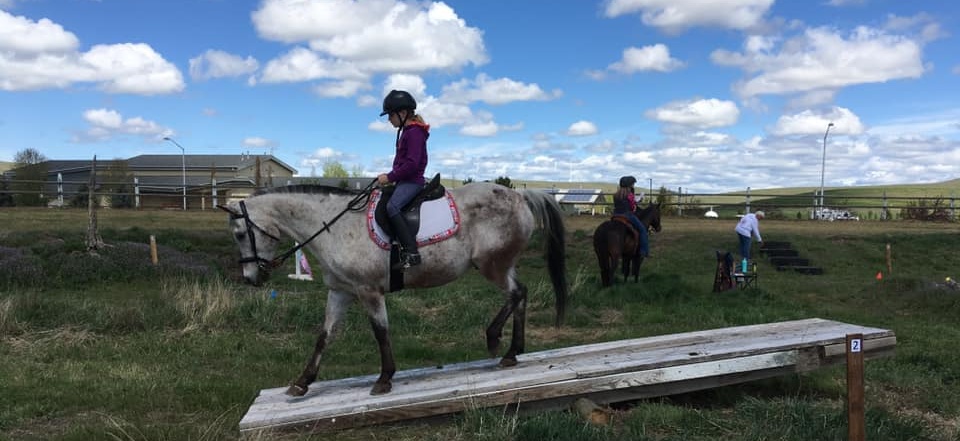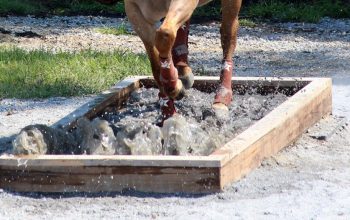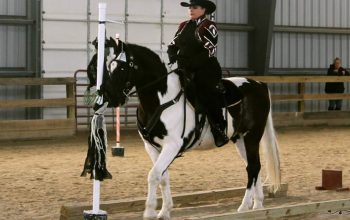…OR NOT!
When you register online for an Equine Trail Sports (ETS) event, you simply select the event, the rider, and the equine. You don’t register for a specific skill level such as Novice, Intermediate, or Advanced. Your skill level is determined by the choices you make during your course.
 ETS events are constructed to include the beginner level to the advanced level, the horse and rider that are just getting started in their relationship to the very advanced horse and rider team. No matter where you are with your relationship with your equine, you can participate in an ETS event.
ETS events are constructed to include the beginner level to the advanced level, the horse and rider that are just getting started in their relationship to the very advanced horse and rider team. No matter where you are with your relationship with your equine, you can participate in an ETS event.
You can choose to compete in an event as the most casual competitor or as the fiercest competitor. You can strategize your placement, or not. Each rider is given their obstacle course sheet at the Riders’ Meeting where the course is discussed with all of the competitors.
The Level Is Your Choice
Each obstacle is shown with 3 levels of execution for the rider to choose from, level 1 being the least difficult level, and level 3 being the most difficult level. If a rider plans to strategize for their placement for the event, they can use the obstacle course chart shown on the course sheet to determine their overall placement of the event. The rider chooses which level they will execute for each obstacle. The sum of the level choices (1, 2 or 3) determines the placement in the Novice, Intermediate, or Advanced bracket.

The Level Affects Your Placement Bracket
Each bracket consists of a range of numbers. This allows for the rider to strategize for a bracket placement by NOT having to choose the same level of difficulty for each obstacle. This allows for the rider to choose based on their horsemanship skills with their equine on that particular day for that particular obstacle. If your equine loves water, you’re more apt to choose level 3 on a water obstacle. If you are just now teaching your equine a side pass, you’re more apt to choose a level 1 for a side pass obstacle.
The brackets have a range due to one of the core beliefs of ETS, that a horse/rider is not always 100% in any one skill level. They are always improving and changing their skills and have a mix of novice, intermediate, and advanced skills, so why not allow them to showcase their accurate skill levels during a competition?
If you choose all level 1s with a course of 6 obstacles, this places you in the Novice bracket, but notice the novice bracket in this example stretches to 8. This allows a rider to select a higher level for a couple of obstacles, perhaps attaining a higher score, and therefore placing them in the upper end of the Novice bracket. The same applies for all brackets. The Advanced level in this example starts at 15. This allows a rider to select a couple of obstacles at a lower level, perhaps attaining a comfort level more suited to them and still remain in the Advanced bracket. The ranges are set so that you are placed in the bracket where you achieved at least half of your obstacles.
The Level Affects Your Score
Your performance is scored using the same scale no matter what level you select. You and your equine are scored 0-10 for each obstacle.
Each level has a weighted factor that is multiplied by your score:
Level 1 – 1.0
Level 2 – 1.3
Level 3 – 1.65
Since each challenge level is approximately a 30% increase in the level of difficulty, each weighted factor affects the score by about 30%. You’ll definitely end up with a higher score if you select a higher level AND you score well. A score of a 10 at the Novice level equates to a score of 7-8 at the Intermediate and a 6 at the Advanced level. So, if you select a higher level be sure you can score at least a 6.
Level 1 score: horse 10 + rider 10 = 20 * 1.0 à 20 total points
Level 2 score: horse 7 + rider 8 = 15 * 1.3 à 19.5 total points
Level 3 score: horse 6 + rider 6 = 12 * 1.65 à 19.8 total points
You Choose Your Strategy, or Not!
You can choose to strategize so that you and your equine feel successful at the end of your course by selecting levels for obstacles that set you up for the most successful outcome. You can choose to strategize to take it easy that day because you or your equine have had to endure some stressful lifetime changes. You can choose to strategize to really push yourselves that day because you’ve been training hard and you’re feeling really good about your horsemanship! Or perhaps you’re not concerned with the placement bracket and you simply choose the levels that best suit you and your equine and you end up where you may! Whatever the choice, it is yours to make and to strategize, or not!
____________________________________
To learn more about Equine Trail Sports visit: www.equinetrailsports.com





